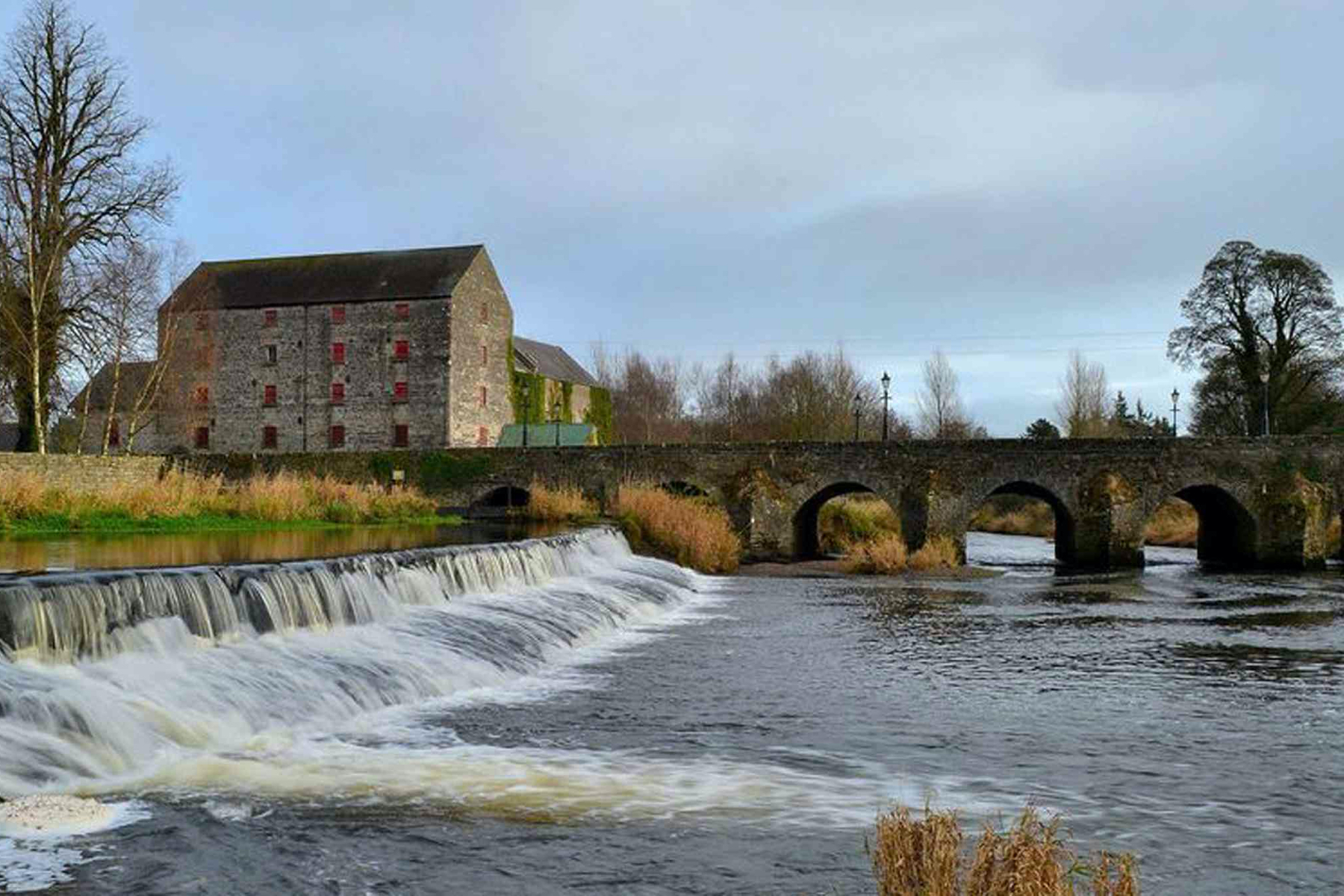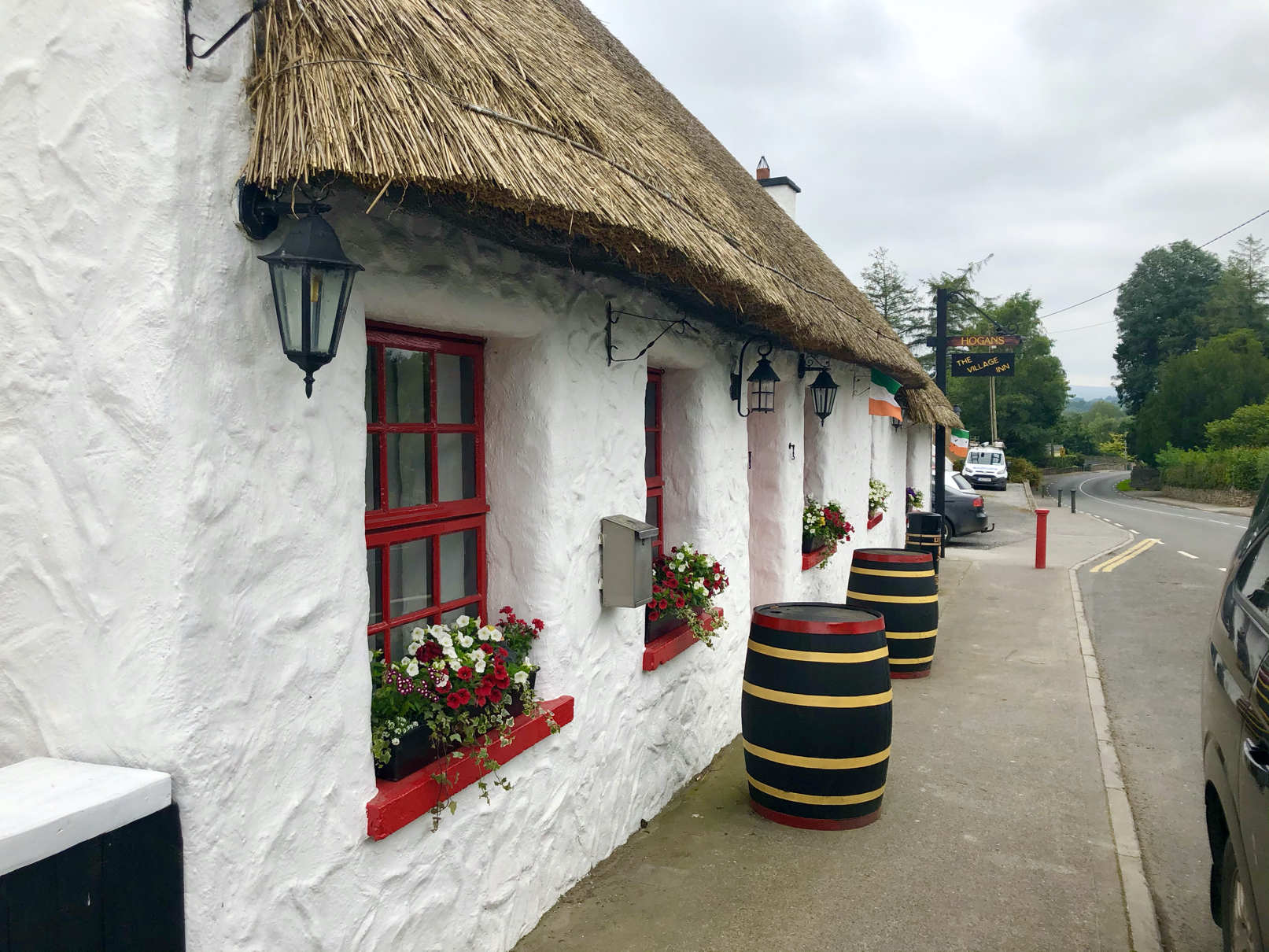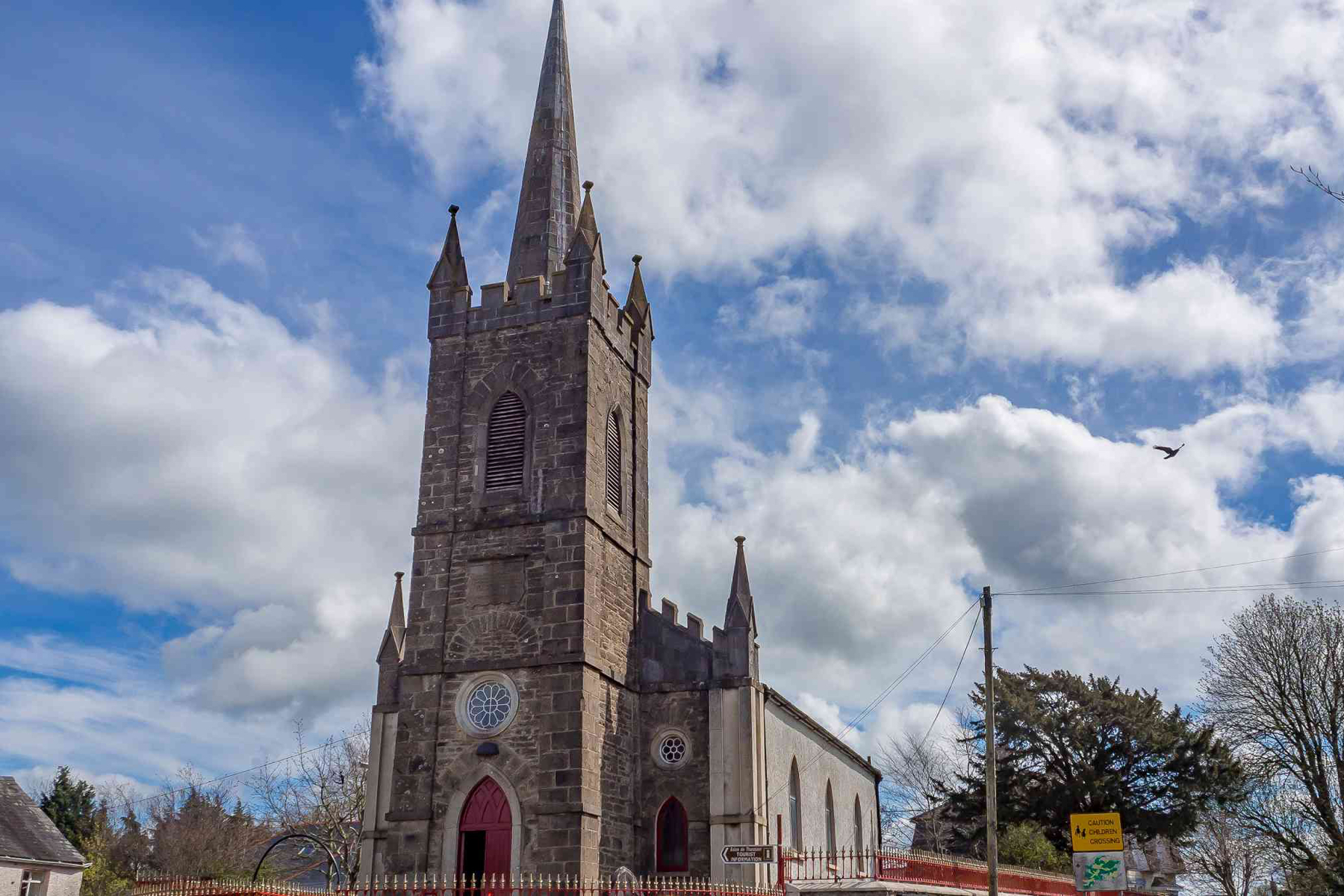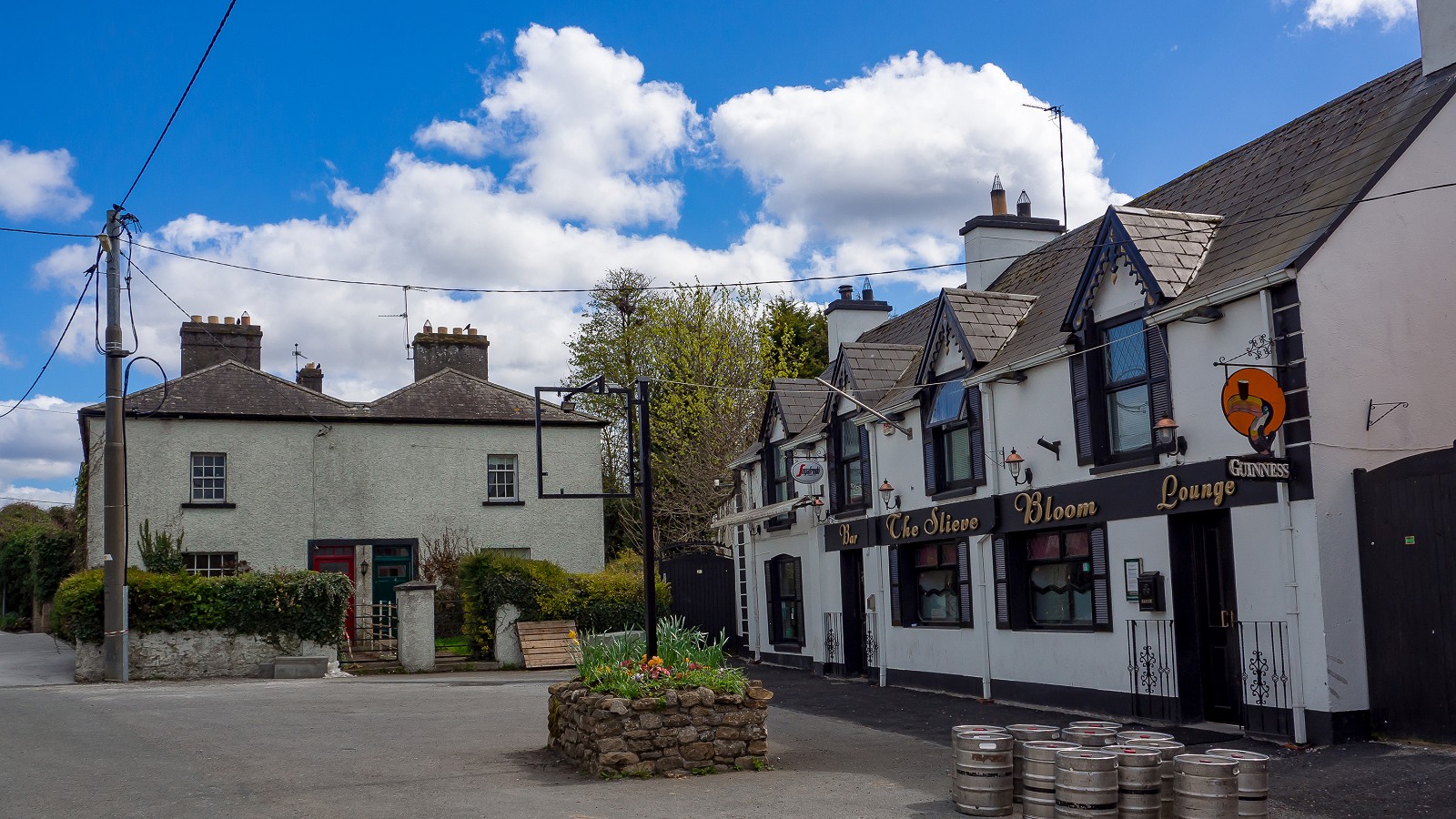
The castle, from which this town takes its name, was built in the 12th century but only it’s foundation and part of the wall remain today. The town itself lies on the banks of the Nore and is centred around a beautiful green. It is picturesque and peaceful with lovely Georgian architecture, a pretty old mill and an impressive six-arched limestone bridge.
The castle, from which this town takes its name, was built in the 12th century but only it’s foundation and part of the wall remain today. The town itself lies on the banks of the Nore and is centred around a beautiful green. It is picturesque and peaceful with lovely Georgian architecture, a pretty old mill and an impressive six-arched limestone bridge.

Coolrain is a small, historic village close to the ruins of the ancient monastery of Anatrim. The Sharps of Roundwood are buried at Anatrim having converted the sacristy of a chapel dating to 1510 into a mausoleum in the 18th century. Not far down the hill from the church lies the holy well of Saint Kavan. Kavan was a member of an extraordinary holy family whose brother, St. Kevin, established the monastery in Glendalough.
Coolrain is a small, historic village close to the ruins of the ancient monastery of Anatrim. The Sharps of Roundwood are buried at Anatrim having converted the sacristy of a chapel dating to 1510 into a mausoleum in the 18th century. Not far down the hill from the church lies the holy well of Saint Kavan. Kavan was a member of an extraordinary holy family whose brother, St. Kevin, established the monastery in Glendalough.
Situated in the north of Laois, Clonaslee prospered in the 18th century due to its location on an important highway, the famous Slí Dála, that led from Laois into Munster. A picturesque village, it was also the traditional seat of the O’Dunnes. It is now a largely 19th century village but with many older ruins in its surrounds reminding us of its former importance.

Situated in the north of Laois, Clonaslee prospered in the 18th century due to its location on an important highway, the famous Slí Dála, that led from Laois into Munster. A picturesque village, it was also the traditional seat of the O’Dunnes. It is now a largely 19th century village but with many older ruins in its surrounds reminding us of its former importance.

The quiet and picturesque village of Kinnitty is nestled at the foot of Knocknamann where the Festival of Bealtaine, a pre-Christian agricultural festival to mark the end of Summer, was held. Kinnitty also boasts a pyramid burial vault, built in 1834 by the Bernard family who lived in Kinnitty Castle. Although tiny by comparison, it is a made-to-scale replica of the Great Pyramid of Giza. Six Bernard family members are buried in the now sealed tomb.
The quiet and picturesque village of Kinnitty is nestled at the foot of Knocknamann where the Festival of Bealtaine, a pre-Christian agricultural festival to mark the end of Summer, was held. Kinnitty also boasts a pyramid burial vault, built in 1834 by the Bernard family who lived in Kinnitty Castle.







